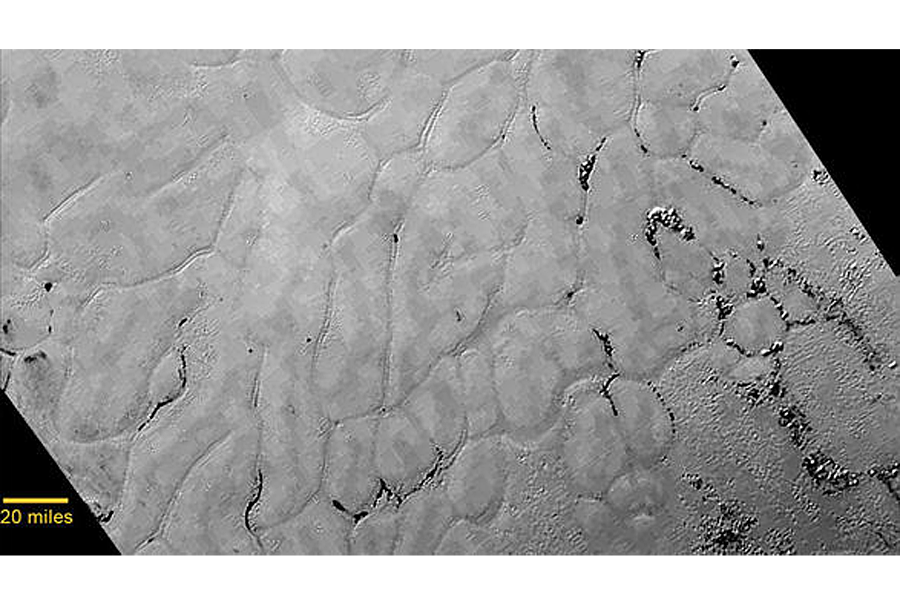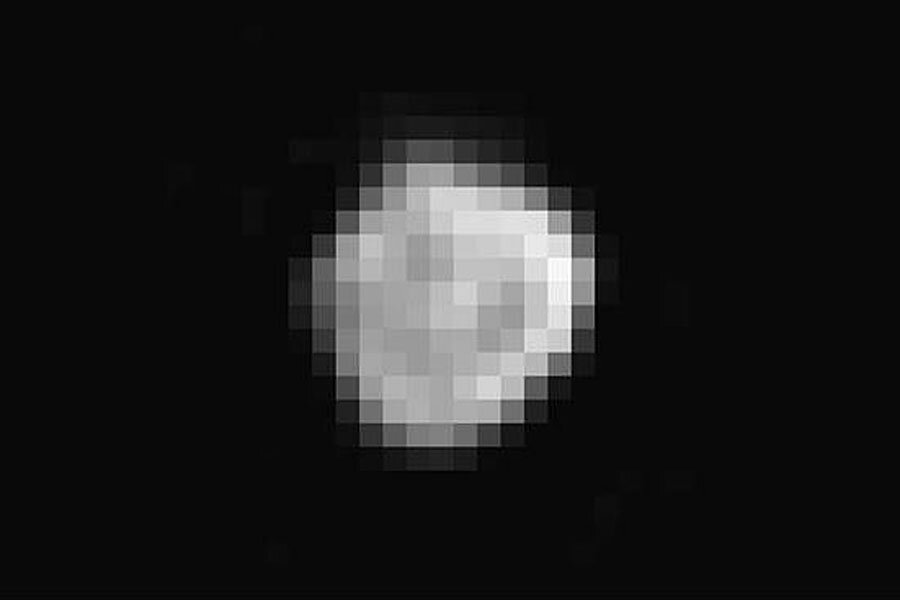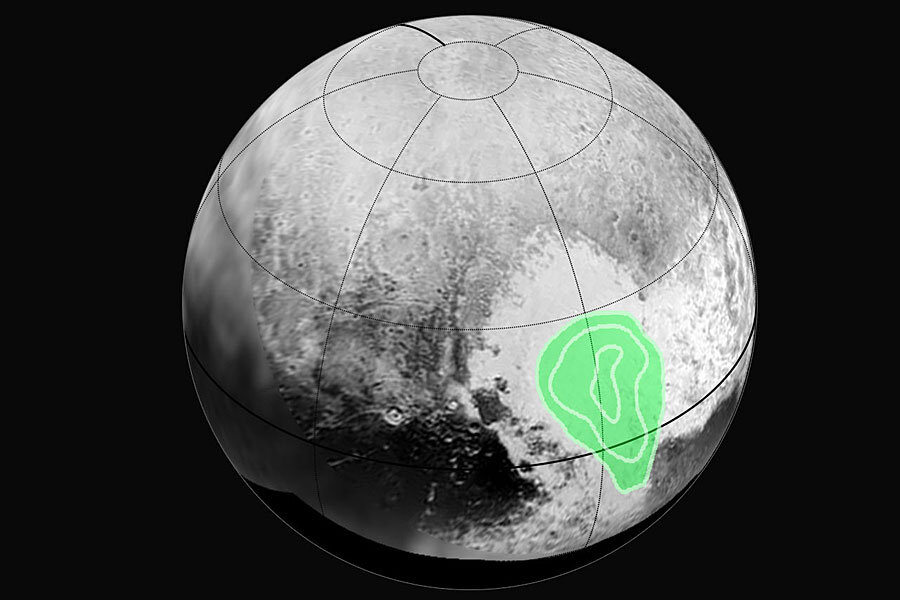Does Pluto have a tail?
Loading...
Sen—NASA’s New Horizons team revealed fresh findings about Pluto today including a close-up of a vast “cracked” and icy plain and the existence of a tail caused by the escaping atmosphere.
Opening a press conference, Jim Green, director of Planetary Science at NASA Headquarters in Washington, said: “What a historic week!” And the mission’s principal investigator Alan Stern said: We’ve just had the most fun. Pluto’s becoming a brand. It sells itself. You don’t really have to work that hard!” He added: “I’m a little biased, but I think the Solar System saved the best for last!”
First image shown was a heavily pixellated picture of one of Pluto’s tiny moons, Nix. Stern, from the Southwest Research Institute (SwRI), Boulder, Colorado, said that despite the low resolution, it showed in twice as many pixels as the best Earth-based image of Puto, which was taken with the Hubble Space Telescope.
Another image showed how early measurements have revealed an excess of the gas carbon monoxide over the bright, heart-shaped region. Stern said that no other concentration of the gas anything like that had been detected elsewhere on Pluto.
The bright zone has already been informally labelled Tombaugh Regio, in honour of Clyde Tombaugh who discovered Pluto in 1930. Within it, and north of Pluto’s icy mountains, lies a vast plain, devoid of craters, and about 20km (12 miles) wide. Its irregular, polygonal pattern resembles cracks, but the team does not yet know how they formed.
Jeff Moore, leader of the New Horizons Geology, Geophysics and Imaging Team (GGI) at NASA’s Ames Research Center, California, told the briefing: The landscape is just astoundingly amazing. Some regions have no craters at all, so obviously younger. It shows that geological processes are happening up to the present time.”
He said that the “cracked” region was smooth but had irregularly-shaped segments, troughs, dark material within troughs, pitted surfaces and hills rising above the terrain. The polygons were like you might see on a boiling pot of oatmeal, or in dried mud. Another intriguing feature was a line of smudges, that might be streaks caused by prevailing winds. He said that they might point to active plumes on Pluto, though he cautioned that none had been discovered yet in the early stages of analysis.
The area has been informally dubbed Sputnik Planum, after the Russian satellite that was mankind’s first space explorer, it was announced. Another mountainous zone has been called Norgay Montes, in honour of Sherpa Tenzing Norgay who, with Edmund Hillary, became the first men to reach the summit of Mount Everest in 1952. He is the first Nepalese person to have a feature named for him anywhere in the Solar System.
The New Horizons Atmospheres team has observed Pluto’s nitrogen-rich atmosphere far beyond its surface. Fran Bagenal, of the University of Colorado, Boulder, estimated that 500 tons of material an hour was escaping from Pluto, compared to just one ton an hour on Mars which has a stronger gravitational pull, and was then being stripped away by the pressure from sunlight. It showed that a substantial amount of Pluto’s mountain ice was being removed.
Bagenal said: “What we think is happening is that the solar wind will eventually interact with this escaping atmosphere and may produce a shock upstream.” She said that the gas was ionised as it escaped and was producing a “tail” of cold, dense tail stretching as far as 1,600 km (1,000 miles) from the dwarf planet.
A surprise guest at the conference at Johns Hopkins University Applied Physics Laboratory, Maryland, and a mission collaborator, according to Stern, was Dr Brian May, guitarist with Queen. He said: “It’s a thrill to be with you guys. What an amazing achievement. You’ve inspired the world.”
Related Links:
Original story from Sen. © 2015 Sen TV Limited. All rights reserved. This material may not be published, broadcast, rewritten or redistributed. For more space news visit Sen.com and follow @sen on Twitter.







